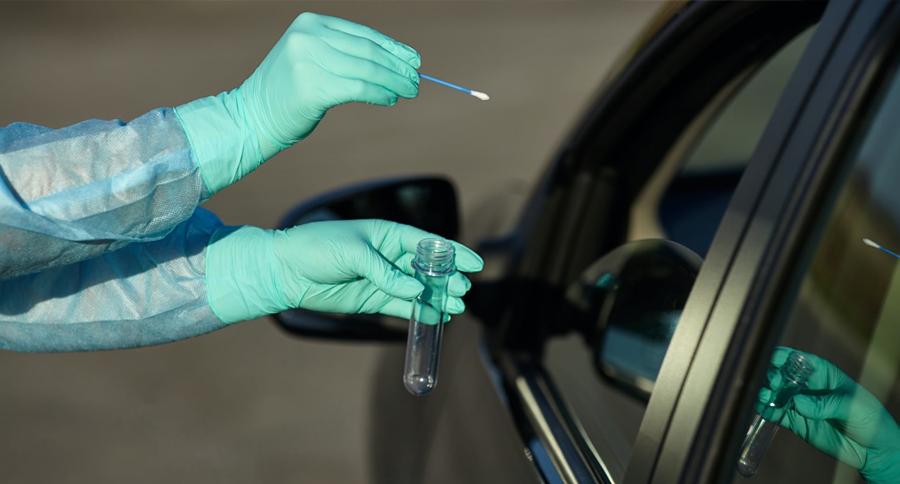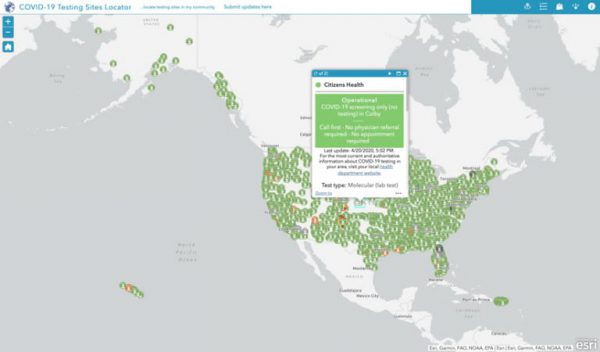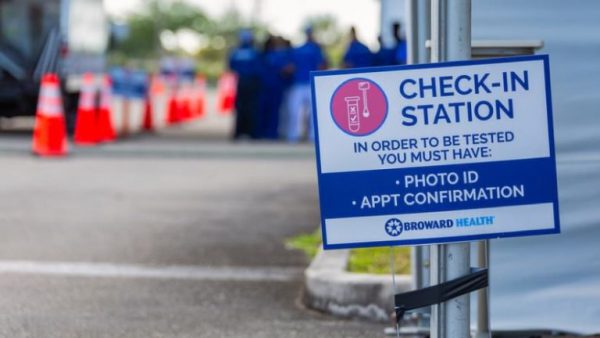
13 May GISCorps Builds an Authoritative Map of COVID-19 Testing Sites
The GISCorps desperately wanted to help. The volunteer organization, operating under the auspices of the Urban and Regional Information Systems Association (URISA), conducts short-term mapping projects, with an emphasis on underserved communities, humanitarian aid, and disaster relief. As the scope and severity of the coronavirus pandemic continued to grow, these experts in the field of geographic information system (GIS) technology wanted to put their skills to good use.
The United States was clearly becoming the epicenter of the pandemic. One reason the novel coronavirus had established such a strong foothold was the country’s lack of a testing regimen. There was still widespread confusion regarding where people could—and which people should—get tested for exposure to the virus. The GISCorps’ response to the pandemic began to take shape. The organization would build the nation’s most complete map of COVID-19 testing sites.
Filling the Information Gap
Originally, the committee talked about gathering information about school district closures and free-lunch programs, but it turned out there were other people already taking care of those mapping needs.
“We felt like the information gap was probably biggest on the testing sites, so that’s what we decided to go with,” Arkison said.
Torpey, Arkison, and core committee member Troy Wirth took the lead on the project. On March 25, they sent a letter to around 2,000 of the group’s 6,800 members, targeting those who had relevant experience and are based in the US.
Formulating a Strategy
GISCorps’ project was not the first attempt to build a nationwide map of COVID-19 testing sites. Coders Against COVID, an ad hoc group of computer experts and medical professionals, had already made a valiant attempt with its website findcovidtesting.com. “They didn’t have the huge volunteer database that we have, so they’d kind of hit a wall,” Torpey said.
GISCorps had its army of GIS pros ready for action, but the logistics proved daunting. To help get the project up and running, the core committee “deputized a couple of star volunteers,” Torpey said. Nadine Trahan and Christina Brunsvold organized responses and liaised with Coders Against COVID. The two organizations connected their respective datasets via web services to aggregate all efforts into a master database that both can use. This linkage means that any updates either organization makes appear on both maps. By late April, the maps included 3,400 testing sites.
The decentralized nature of the nation’s public health system is a major hurdle—even among states where testing has been comparably prevalent. “Within the state, some counties may be doing less or more of it,” Arkison explained. “And don’t forget the individual cities and municipalities. So, it’s a constantly evolving back end process.”
Leveraging Local Knowledge
Many of the volunteers are uniquely positioned to receive up-to-date information. “We have a lot of members who work in government, including health departments on the county or state level,” Torpey said. “They have connections within these organizations, so they’re better informed than a lot of people.” Besides bringing their own knowledge to the map, the GISCorps volunteers involved with the project also function as editors. Any members of the public who want to add new testing sites to the map or change the information on sites already on the map can fill out a survey form.
The map offers ancillary benefits for the government and related organizations. They can use it for analysis, capacity assessment, and resource allocation purposes.
Unleashing GIS Technology’s potential in every industry
Read more


